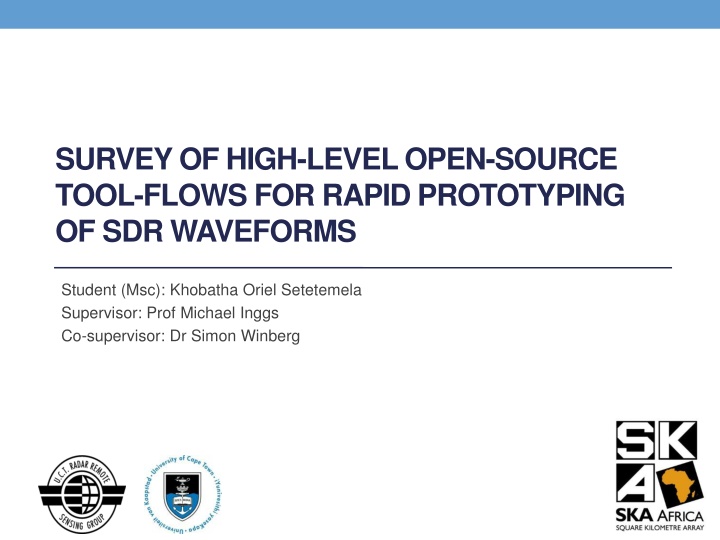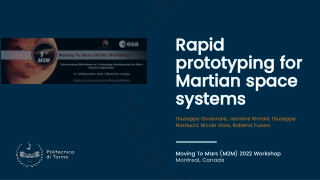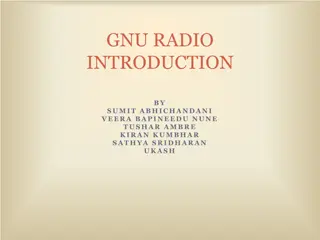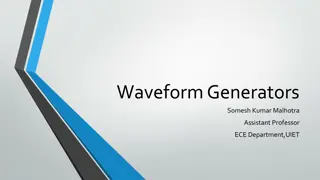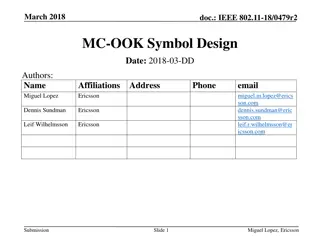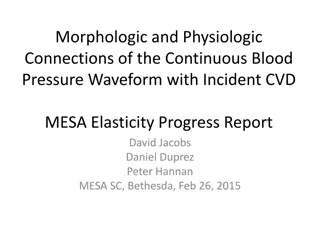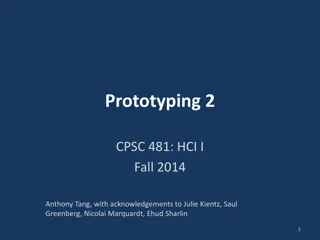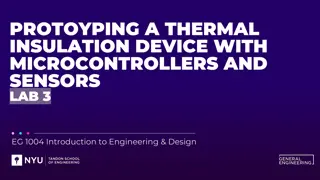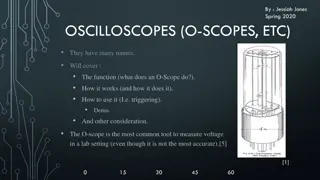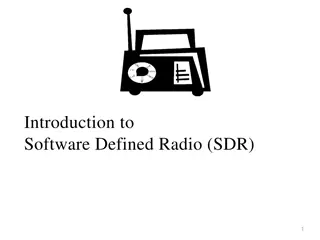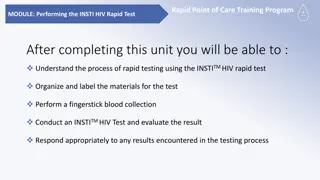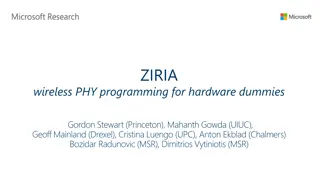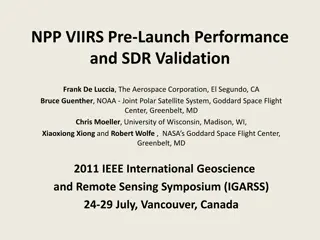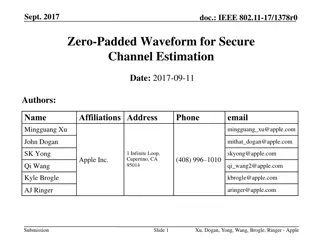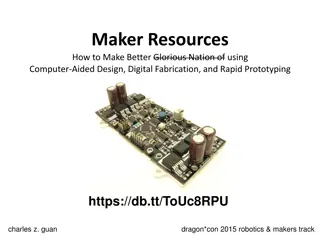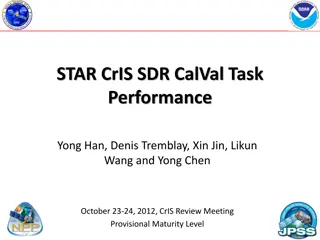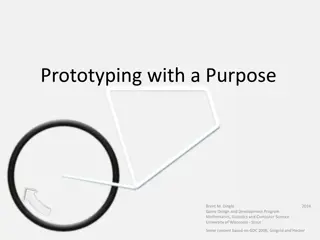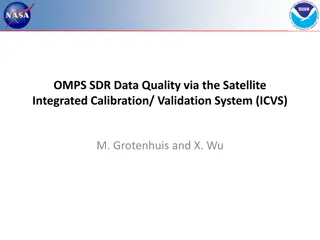Survey of High-Level Open-Source Tool-Flows for Rapid Prototyping of SDR Waveforms
This research project explores the use of high-level open-source tool-flows for rapidly prototyping software-defined radio (SDR) waveforms. It delves into the motivation, design productivity gap, basics of SDR, ideal requirements for high-level SDR tool-flows, and a survey of potential tools. The study aims to address the increasing hardware complexity in SDR systems by leveraging software-defined approaches.
Download Presentation

Please find below an Image/Link to download the presentation.
The content on the website is provided AS IS for your information and personal use only. It may not be sold, licensed, or shared on other websites without obtaining consent from the author.If you encounter any issues during the download, it is possible that the publisher has removed the file from their server.
You are allowed to download the files provided on this website for personal or commercial use, subject to the condition that they are used lawfully. All files are the property of their respective owners.
The content on the website is provided AS IS for your information and personal use only. It may not be sold, licensed, or shared on other websites without obtaining consent from the author.
E N D
Presentation Transcript
SURVEY OF HIGH-LEVEL OPEN-SOURCE TOOL-FLOWS FOR RAPID PROTOTYPING OF SDR WAVEFORMS Student (Msc): Khobatha Oriel Setetemela Supervisor: Prof Michael Inggs Co-supervisor: Dr Simon Winberg
Outline Motivation Design Productivity Gap Basics SDR Overview Survey Methodology Ideal High Level SDR Tool-Flow Requirements Survey of Potential High-Level SDR Tools Conclusions
The Design Producity Gap Hardware complexity doubles about every 18 months Hardware increases in computing potential eg. GPPs, DSPs, FPGAs Hardware capabilities are increasing faster than designer s abilities to design for them Software Defined Radios original image: http://ppl.stanford.edu/main/
From Hardware-defined to Software-defined Radio Traditional Hardware-defined radio: Fixed functionality E.g: FM only Require new HW to support new radio standard/protocols Not sustainable! Software-defined radio: SDR Handbook (2010) Some or all of the physical layer functions are SW-defined (SDR Forum) Mitola (1992) High-performance programmable DSP devices (GPPs: parallel C++, DSPs: C, FPGAs: HDL, GPGPUs: C/OpenCL) E.g MeerKAT receiver
Survey Methodology System-engineer requirements for an Ideal High-Level SDR Tool-Flow Evaluate a selected set of potential high- level open-source tools against the Ideal SDR Tool-Flow requirements Make recommendations based on the evaluations
Ideal High-Level SDR Tool-Flow Requirements Be easy-to-learn and easy-to-use Support both algorithm (module) and system-level design Provide a library of common communications and signal processing primitives Provide sufficient high-level HW abstraction mechanisms Provide efficient, quick verification and debug facilities Facilitate easy cross-platform design portability Support one-click code generation Support heterogeneous processing on SDR devices Produce good quality designs 10. Easy integration with legacy design and verification tools 11. Comply with SDR standards eg. SCA (Adopted by the SDR Forum) 1. 2. 3. 4. 5. 6. 7. 8. 9.
Ideal High-Level SDR Tool-Flow SDR Specification Algorithm and system-level Library of DSP primitives Hardware abstraction High level modeling Efficient, quick verification and debug facilities High level verification SDR Design Flow Standard Compliance (E.g SCA) Once-click code generation Code generation Efficient, quick verification and debug facilities Low level verification Easy integration with legacy tools Heterogeneous processing Good quality designs System Implementation In-situ test and validation
Overview of Potential High-Level SDR Waveform Design Tools Open-Source Proprietary MiGen Python Toolbox MyHDL Python Package Delite DSL Framework Legup C HLS xPilot HLS Chisel Scala HCL ALOE (SCA) SynDex Ptolemy II GNU Radio REDHAWK (SCA) OSSIE (SCA) Cynthesizer HLS Catapult HLS Mitrion C HercuLes HLS Vivado HLS Bluespec HLS Hotrod Spectra SDR SCARI (SCA) SystemVue ESL Mathworks HDL Coder & Verifier CASPER MSSGE Textual Model-based The list is not exhaustive. But it gives a sufficient state-of-the-art sampling of high level design methodology efforts for narrowing the design productivity gap.
MyHDL A Python package that makes it possible to use Python as a digital hardware description and verification language Python as a HDL and a HVL Python (HDL) Model Rich Python s fast-prototyping features Simulation <Co-simulation> and libraries Built-in high-level simulator that HDL Code Generation supports co-simulation with conventional HDL simulators Synthesisable Verilog/VHDL Conversion of Python subset to Implementation <Traditional flow> generic synthesizable HDL FPGA/ASIC implementation only
Ptolemy II A rich Java-based framework for experimenting with AOD design techniques Ptolemy II AO Model (Graphical/Java) Targeted primarily at modelling, design and simulation of concurrent, real-time, Functional Verification <> embedded systems High-level design capture using Java or Code Generation <copernicus/cal/cg> graphically using Vergil GUI Code generation from the high-level AOD models (Embedded Java, C) Embedded C, Java code Implementation <Traditional flows>
GNU Radio A development toolkit that provides a dataflow-based signal processing scheduler (the heart of GNU Radio) and common processing blocks to implement SDRs Most popular SDR SW platform High-level design entry using Python or graphically using GRC Built-in rich library of communications and signal processing primitives
MiGen Toolbox A much-improved metaprogramming toolbox for generating complex hardware from Python Python as a metalanguage for HDL Python (FHDL) Model Synthesiser that builds Python subset Simulation <Icarius Verilog> (FHDL) into generic HDL Dataflow programming system HDL Code Generation SoC bus infrastructure (Wishbone, CSR) Simulator that supports Python test- Synthesisable Verilog benches Implementation Online training access (EDA playground) Direct interface with 3rd party EDA tools
Delite A highly-extensible compiler framework and heterogeneous runtime for parallel embedded domain-specific languages (DSLs) Primary goal is to solve the parallel programming challenge for modern heterogeneous architectures (Multicore GPPs, GPUs, Clusters, FPGAs etc) Image: Kunle et al (2007)
Delite Tool-flow Scala DSL Model Functional Validation <scala test-bench> Design entry using high-performance, highly productive, implicitly parallel DSLs Heterogeneous Compilation <delite compiler> Optimisers for parallel code (generic and domain-specific) Code generation Heterogeneous code generators (Multicore GPPs: Scala/C++ and GPUs: CUDA) Binding Heterogeneous runtime (GPP only, GPP + GPU) DEG Heterogeneous Implementation <delite runtie> GPP GPU
Conclusions Design productivity gap is one of the grandest challenges of modern computing It cuts across all computing applications It limits innovation and technology adoption E.g SDRs There is high and varied activity in both academia and industry to address this challenge High-level design is the generally followed approach Bring rich high-level SW design techniques to HW design High-level design techniques will play a paramount role in bridging the design productivity gap for SDR But it will take time and tremendous effort to completely escape from traditioinal HDLs (2030?) The following problems remain to be addressed to make the high-level (SDR) design methodology a mature reality Standardisation, Heterogeneous processing, HW/SW co-design
Useful Links Delite Project page: http://stanford-ppl.github.io/Delite/ Source code: https://github.com/stanford-ppl/delite MiGen Project page: http://milkymist.org/3/migen.html Source code: https://github.com/m-labs/migen MyHDL Project page: http://www.myhdl.org/doku.php Source code: https://bitbucket.org/jandecaluwe/myhdl Ptolemy Project page: http://ptolemy.eecs.berkeley.edu/ptolemyII/ GNU Radio Project page: http://gnuradio.org/redmine/projects/gnuradio/wiki EDA Playground (MiGen and MyHDL) Project page: http://www.edaplayground.com/
